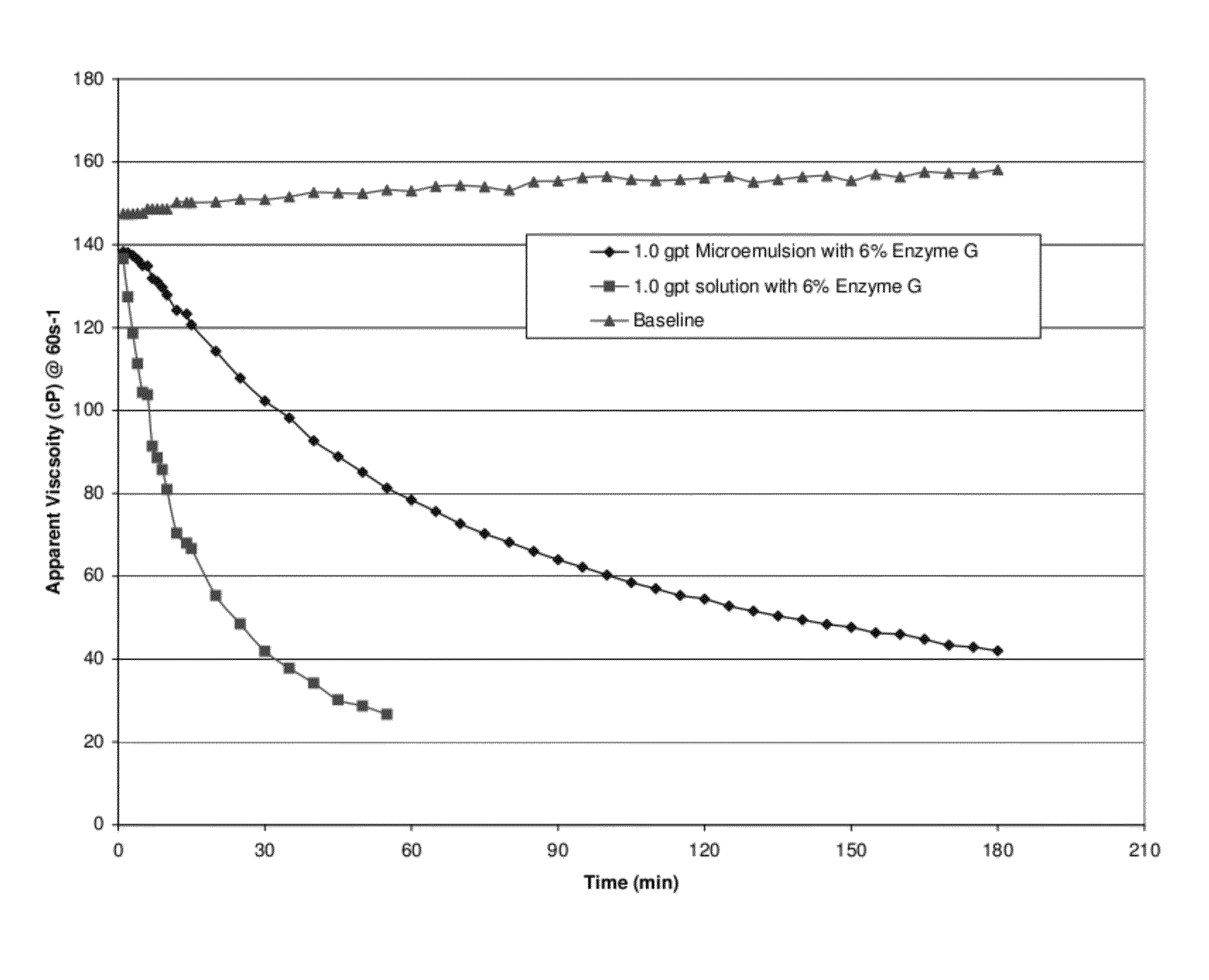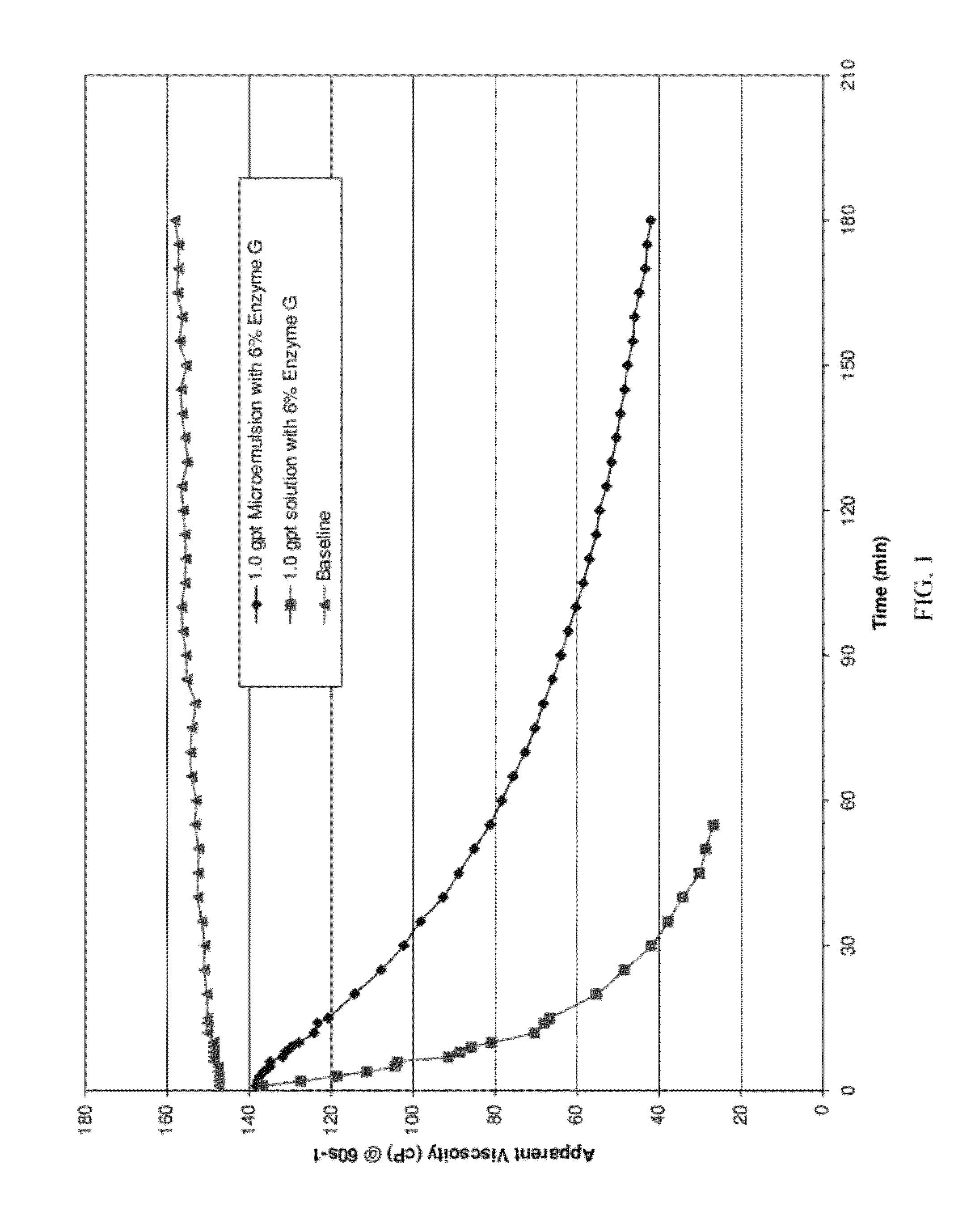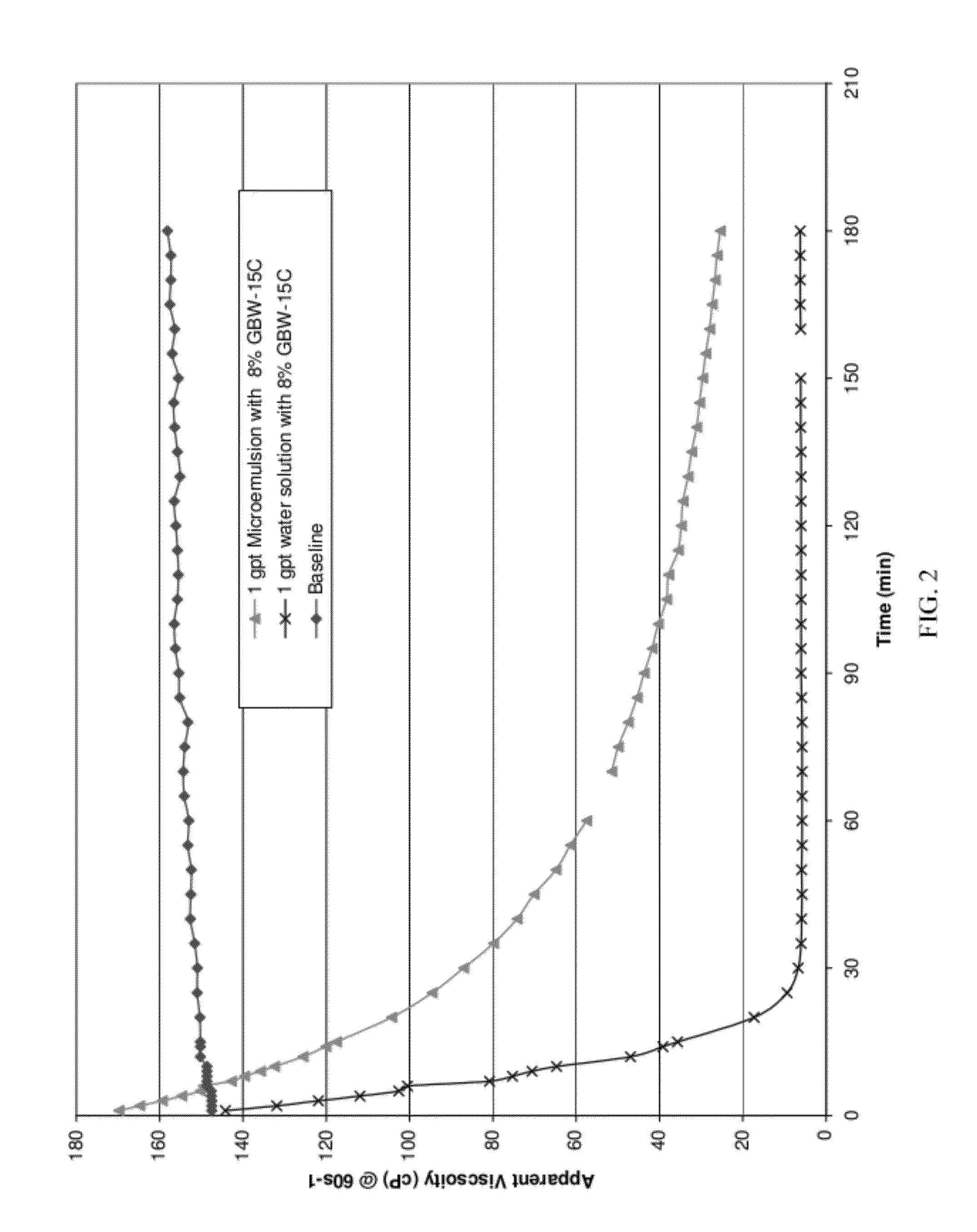Method of inhibiting or controlling release of well treatment agent
a well treatment agent and release technology, applied in the direction of fluid removal, chemistry apparatus and processes, borehole/well accessories, etc., can solve the problems of reducing well productivity, contaminating other equipment and flow conduits, and difficult or impossible to remove tubing for servicing
- Summary
- Abstract
- Description
- Claims
- Application Information
AI Technical Summary
Benefits of technology
Problems solved by technology
Method used
Image
Examples
example 1
[0083]The release rate of water-in-oil microemulsions containing a beta-mannanase enzyme, commercially available as GBW-12CD from Baker Hughes Incorporated; Enzyme G, a breaker for guar based fluids, commercially available from Baker Hughes Incorporated and a hemicellulase, commercially available as Enzyme GBW-15C from Baker Hughes Incorporated were compared to aqueous fluids containing the same enzymes. The tests were conducted using the same concentrations at the same temperatures in order to demonstrate the effect of the well treatment agent in the water-in-oil microemulsion compared to the well treatment agent in an aqueous fluid. The oil phase of the microemulsion consisted of about 56% by volume of a surfactant mixture of polyoxyethylene sorbitan monopalmitate and ethoxylated castor oil and about 34% by volume d-limonene. The microemulsions contained 6% Enzyme G, 8% Enzyme GBW-15C. Water solutions containing 6% Enzyme G and 8% Enzyme GBW-15C were also prepared.
[0084]The linear...
PUM
| Property | Measurement | Unit |
|---|---|---|
| time | aaaaa | aaaaa |
| particle size | aaaaa | aaaaa |
| weight percent | aaaaa | aaaaa |
Abstract
Description
Claims
Application Information
 Login to View More
Login to View More - R&D
- Intellectual Property
- Life Sciences
- Materials
- Tech Scout
- Unparalleled Data Quality
- Higher Quality Content
- 60% Fewer Hallucinations
Browse by: Latest US Patents, China's latest patents, Technical Efficacy Thesaurus, Application Domain, Technology Topic, Popular Technical Reports.
© 2025 PatSnap. All rights reserved.Legal|Privacy policy|Modern Slavery Act Transparency Statement|Sitemap|About US| Contact US: help@patsnap.com



